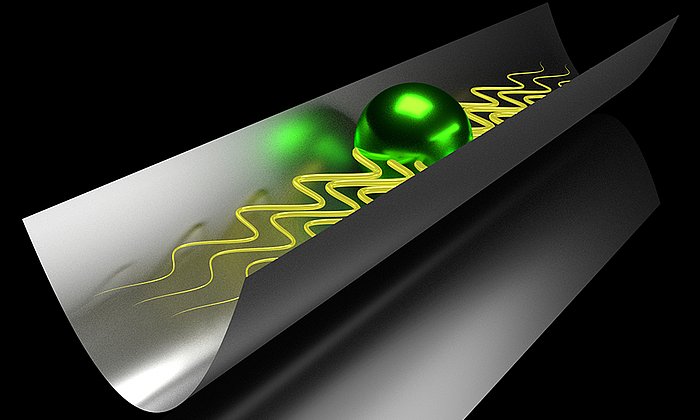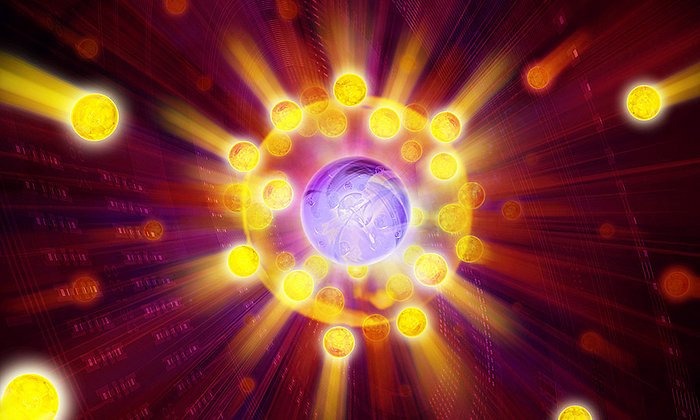Physicists create quantum system, which is robust to mixing by periodic forces
Shaken, but not stirred

In fact, the problem with quantum matter normally lies in its extreme sensitivity to perturbation: The action of even weak oscillatory forces typically has drastic consequences in the long term and is expected to dramatically alter its initial state. Therefore – up until now – it had been widely assumed that quantum systems should normally be susceptible to mixing, since shaking injects energy into the system, and should cause it to heat up indefinitely.
Now the research groups from Munich have experimentally characterized an exotic quantum state that does not behave this way: When subjected to a periodic force, its constituents do not mix.
They first cooled a cloud of potassium atoms to an extremely low temperature in a vacuum chamber. They then loaded the ultracold atoms into an optical lattice formed by counter-propagating laser beams that generate standing waves. Such a lattice can be thought of as a network of energy wells in which the atoms can be individually trapped, like the eggs in an egg carton.
Controlled disorder
“In addition, we were able to introduce disorder into the lattice in a controlled manner by randomly altering the depth of the individual wells,” says Pranjal Bordia, first author of the study. By this means, the potassium atoms could be localized in special areas of the network, and were not evenly distributed within the lattice.
The physicists then shook the lattice by periodically varying the intensity of the laser light. But the system turned out to be so stable that the localized groups of atoms did not mix. The potassium atoms were tossed about somewhat, but their overall distribution in the lattice remained intact.
Confirmation of the theory
The experiments confirm recently published predictions relating to a specific class of quantum systems in which disorder actually serves to localize quantum particles. Moreover, the observation that this newly realized exotic quantum state remained stable for an unexpectedly long time is supported by the results of subsequent high-performance numerical simulations carried out by Michael Knap, Rudolf Mößbauer Tenure Track Professor for Collective Quantum Dynamics at the Technical University of Munich.
The experimental demonstration of this quantum system could have practical consequences for efforts to develop robust quantum computers, and studies of exotic quantum states promise to yield new insights into fundamental issues in theoretical physics.
The work was funded by the European Union (FP7, UQUAM, AQuS), by the German Research Foundation via the TUM Institute for Advanced Study and the Cluster of Excellence Nanosystems Initiative Munich (NIM).
Publication:
Periodically Driving a Many-Body Localized Quantum SystemPranjal Bordia, Henrik Lüschen, Ulrich Schneider, Michael Knap, and Immanuel Bloch
Nature Physics, online, Jan. 30, 2017
Contact:
Prof. Dr. Michael Knap
Rudolf Mößbauer Tenure Track Professorship for Collective Quantum Dynamics
Technical University of Munich
Walter Schottky Institute
Am Coulombwall 4, 85748 Garching
Tel.: +49 89 289 12750 – E-mail - Web
Technical University of Munich
Corporate Communications Center
- Monika Gödde (LMU) / Andreas Battenberg (TUM)
- battenberg@zv.tum.de
- presse@tum.de
- Teamwebsite

